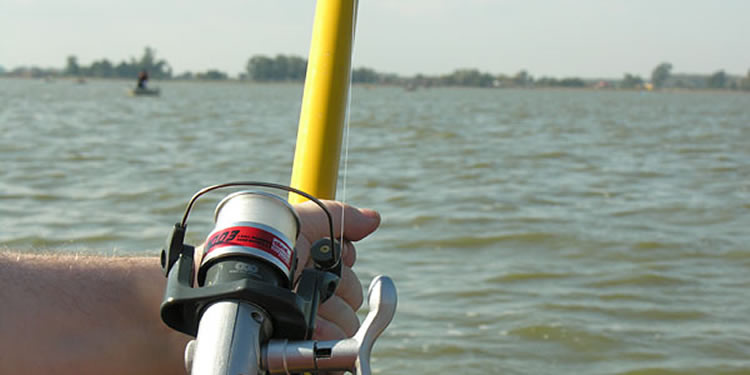
The wide River Plate, along with other fisheries of the Delta, is ideal to capture pejerreyes during the entire winter season, from April to September.
The fishing of pejerreyes in the estuary is a dream for the lovers of the species, because of the large specimens caught there.
But this is not an easy task. The influence of the moon and the wind become the protagonist in this kind of fishing. Anglers must fish from crafts, and in the company of a guide, whose experience is essential to start the search for these coveted trophies in the vastness of the beautiful river with the color of the lion.
Even if this means that the fuel expense is high, it is worth trying. Once the fish are spotted, the bite is given almost in the surface. Therefore, it is possible to notice the presence of pejerreyes at first sight, cutting the surface of the water with their fins and making big bubbles, a sign that we are undoubtedly before the largest specimens...
These pejerreyes prefer the clearer waters. In consequence, as the river is sailed, anglers must watch the color in the middle of the river: if they want to come across these fish, the clearer the water, the better. Another consideration to be taken into account is that, as the size and the river volume increases, the size of the caught species increases too. Accordingly, smaller specimens are caught in small rivers. Something similar occurs with the bait: if they are large, such as the mojarras, dentudos, isocas or even small morays, the possibilities of catching large specimens boost.
Finally, it may be said that "the Great Paraná" pejerreyes are the most coveted by sport anglers. Due to their great voracity and size, they turn out to be the trophy dreamt by lovers of the species. They are plentiful in the River Plate. Anglers just have to be lucky enough to come across them...

Between October and November, the River Plate and its Delta offer large sea catfish in open waters. This species, from the sea littoral, gets into the estuary of the River Plate. There, it is caught using fresh shrimp as bait, which is their regular diet in the salty waters of the sea.
Once the warm temperatures of December become settled, the boga is, along with the wolf fish, the anglers' delight in all the rivers and streams of the Delta.
Owner of a set of teeth very similar to that of humans and of an incredible subtlety at the time of their meal, it is caught with all kinds of bait, especially those made with corn and wheat flour, earthworms, natural corn grain and sausage, as well as salami and cheese, to name a few kind of bait that usually tempt this fish.
The same fisheries that are suitable for the fishing of pejerrey in the winter are visited by thousands of bait species in the summer. Among them, the mojarras, dentudos and yellow catfish outstand.
These small fish attract the presence of the large predators from the Argentinian north, such as the dorado, the surubí and the patí, which even if they do not reach the traditional sizes obtained upstream in the Rivers Uruguay and Paraná, they are species equally qualified for sport anglers close to the City of Buenos Aires and its surroundings.
They are located in the deepest areas of the River Plate, called pools, and also in the plentiful Paraná de las Palmas and Paraná Guazú Rivers. Also in rivers with smaller volumes, such as the Paraná Miní, the Paraná Bravo, the Barca Grande River and the countless streams that cross the Talavera Island.
In the area of the Bajos del Temor and Punta Morán, these species search for the flumes formed among the large sand banks and wait for the exit of the minnows that are part of their daily diet.
The same bait used in the Argentinian north is used here: yellow catfish, sábalos, morays, bogas and eels, although the fishing equipments are usually lighter. One-piece rods with mid-sized spinning reels loaded with a 0.50 mm line, and sinking and floating lines with a leader before the hook predominate in order to avoid cuts in these large hunting species.
Sailing out, anglers will reach the Barca Grande pools, another great fishery which, along with the Emilio Mitre channel and Playa Honda, guarantees the best catches of the first section of the River Plate. In the second section of the delta, the Paraná de las Palmas River mouth gives origin to large fisheries such as the Bajos del Temor and Punta Morán into the River Plate. Once in the third section of the delta, the Paraná Guazú River and the Paraná Bravo River are, along with Punta Gorda and Nueva Palmira -the latter on the Uruguayan side- other large fisheries for the end of the season, when the cold of the winter has come. The Uruguay river is another very good fishery.
On the Uruguayan shore, the quantity and quality of the catches improve remarkably. And it is the destination for most anglers from the marinas located in Tigre. The best catches take place from Colonia del Sacramento to the Martín García Island.